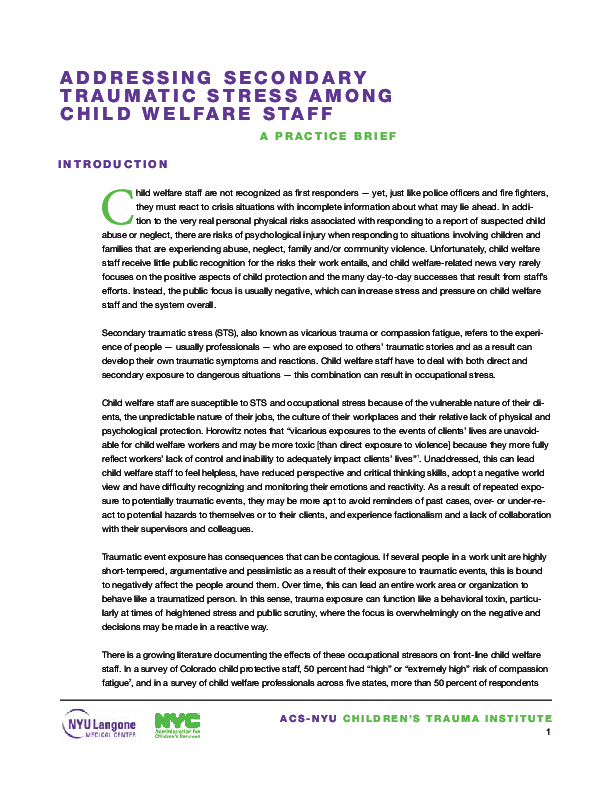
Reports
Addressing Secondary Traumatic Stress Among Child Welfare Staff: A practice brief
Publication year:
2012
English
Format:
(145.9 KiB)
Publisher:
NYU Langone Medical Center
Secondary traumatic stress (STS), also known as vicarious trauma or compassion fatigue, refers to the experience of people — usually professionals — who are exposed to others’ traumatic stories and as a result can develop their own traumatic symptoms and reactions. Child welfare staff have to deal with both direct and secondary exposure to dangerous situations — this combination can result in occupational stress. Child welfare staff are susceptible to STS and occupational stress because of the vulnerable nature of their clients, the unpredictable nature of their jobs, the culture of their workplaces and their relative lack of physical and psychological protection.
Between 2007 and 2012, the Resilience Alliance intervention has been implemented four times: the pilot was limited to newly hired child protective specialists and their supervisors, and the subsequent rounds have been with both new and veteran staff at all levels of the organizational structure (child protective specialists, supervisors, managers and deputy directors). The Resilience Alliance focuses on three core concepts — optimism, mastery and collaboration — and uses a combination of didactic and interactive components to first teach, and then help staff to apply, emotion regulation and other resilience-related skills. In the last complete round, over 80 percent of participating staff said that they would recommend the intervention to colleagues in other areas of the agency.
Read full abstract
View & Download
Document information
Publisher
Content type
Country
Region
Rights
© Author/Publisher
Found a mistake? Help us improve!
If you have noticed a document assigned to the wrong author or any other inaccuracies, let us know! Your feedback helps us keep our data accurate and useful for everyone.
Share
Link
